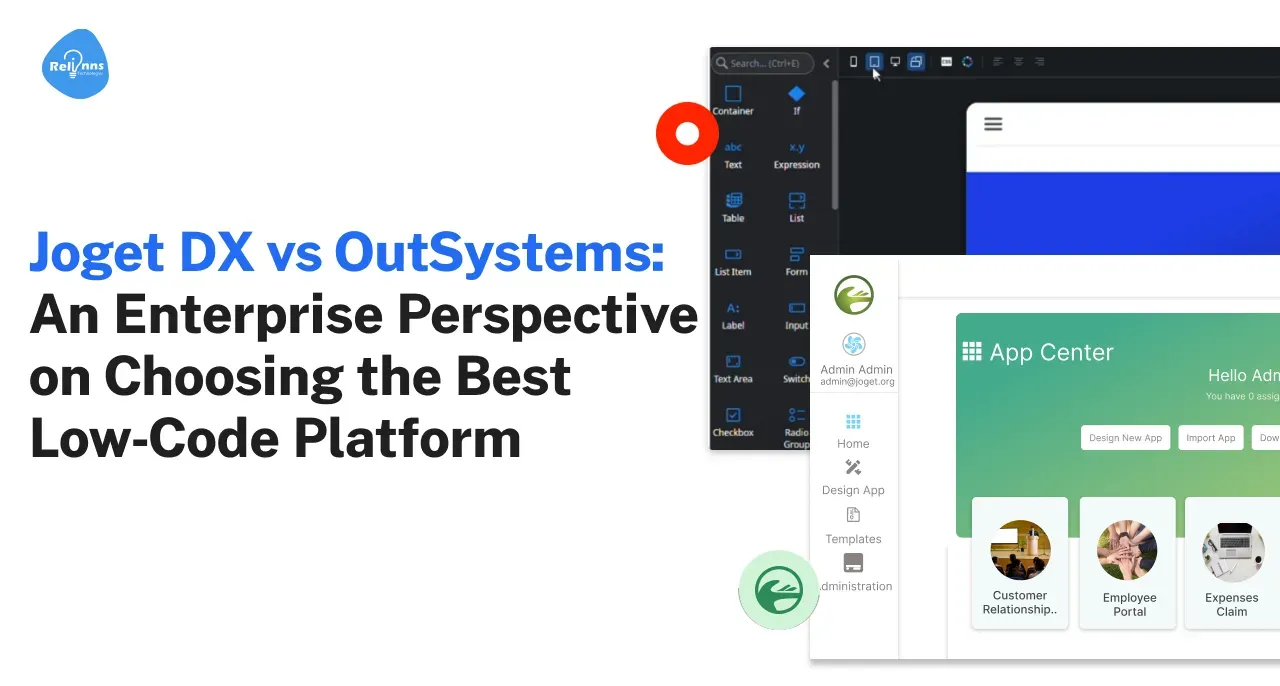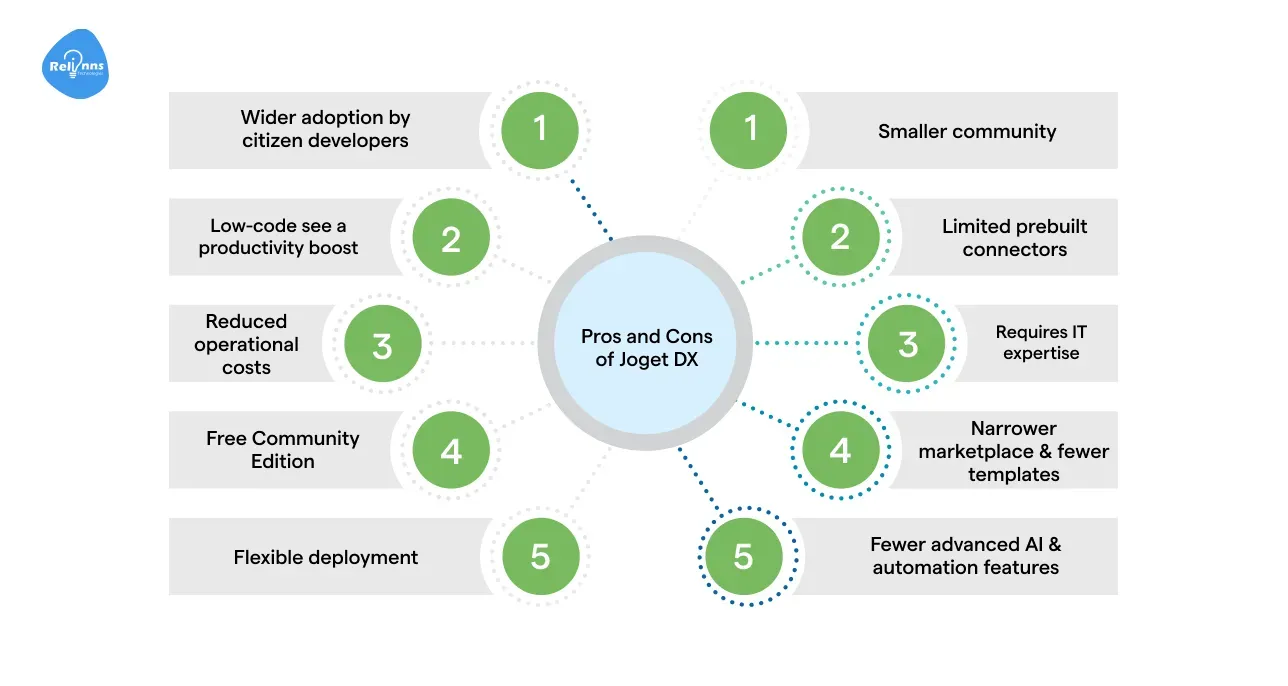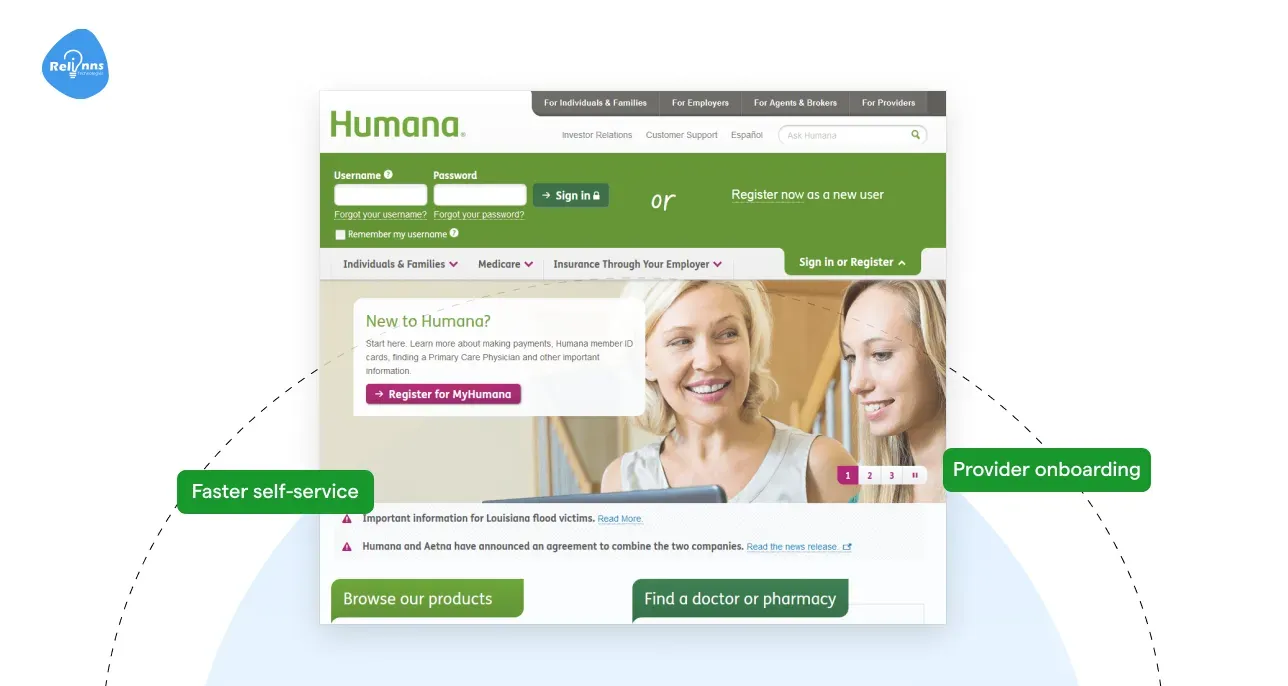Joget DX vs OutSystems: An Enterprise Perspective on Choosing the Best Low‑Code Platform
Date
Sep 29, 25
Reading Time
7 Minutes
Category
Low-Code/No-Code Development

The rise of low-code has transformed how enterprises approach digital initiatives. No longer reserved for IT-heavy teams, these platforms allow business and technology groups to collaborate on delivering applications faster and at scale.
In the conversation of Joget vs OutSystems, both platforms stand out but for different reasons.
Joget DX appeals with its open-source flexibility, affordable licensing, and hybrid deployment options, making it attractive to organisations that want tighter control over infrastructure and costs.
What is OutSystems?
OutSystems is a leading enterprise low-code platform designed for large-scale, mission-critical applications.
Backed by strong adoption across industries, it combines a visual development environment with the ability to extend applications through custom code and integrations.
OutSystems supports deployment in cloud, on-premises, or hybrid models, providing enterprises with flexibility without sacrificing vendor-backed scalability. Its ecosystem includes certified connectors for SAP, Salesforce, and Microsoft, which makes it particularly powerful for organisations seeking deep integration with existing enterprise systems.
The platform is priced at a premium, starting at over $30,000 annually, reflecting its positioning for large enterprises rather than small teams.
With advanced governance, lifecycle management, and a global community, OutSystems is often chosen by organisations undergoing broad digital transformation projects.
Key Features
- Enterprise-grade low-code platform for scalable, complex apps.
- Visual, model-driven development with code extensibility.
- Deployment flexibility: cloud, hybrid, or on-premises.
- Certified connectors for SAP, Salesforce, Microsoft, and others.
- Robust compliance portfolio including ISO 27001 and SOC 2.
App Development Features Comparison: Joget DX vs. OutSystems
Both Joget and OutSystems deliver a comprehensive set of features for enterprise application development.
They each provide a visual development environment that simplifies drag-and-drop UI design and workflow automation.
Key Differences: Joget DX vs OutSystems
Capability | Joget DX | OutSystems |
| Visual Development | Drag-and-drop builders for forms, workflows, and dashboards | Model-driven design with rich IDEs and lifecycle tools |
| Extensibility | Open-source plugins, Java support, REST APIs | Custom code extensions (Java, .NET, JavaScript) and Integration Studio |
| Deployment | On-premises, private cloud, or Kubernetes/OpenShift | Public cloud, private cloud, on-prem, or hybrid |
| Integrations | REST/SOAP APIs, JDBC connectors, plugin marketplace | Certified connectors for SAP, Salesforce, Microsoft, and Oracle |
| Target Users | Citizen developers, SMEs, hybrid IT teams | Large enterprises with complex digital transformation needs |
| Cost Profile | Free Community edition, low-cost enterprise licensing | Premium pricing starting at ~$36k/year |
Pros and Cons: Joget vs OutSystems
Choosing between Joget vs OutSystems means weighing trade-offs. Each platform has distinct strengths and limitations.
Pros and Cons of Joget DX Summary

Joget DX – Pros (Stat-Based) | Joget DX – Cons |
| 84% of enterprises report wider adoption by citizen developers | Smaller community compared to global enterprise rivals |
| Boosted productivity in 80% of organisations adopting low-code | Limited prebuilt connectors for complex system setups |
| Reduced operational costs in 79% of surveyed companies | Fewer advanced AI and automation features are available |
| Free Community edition and cost-effective licensing tiers | Narrower marketplace and fewer enterprise templates |
| Flexible deployment across on-premises, cloud, and Kubernetes | Requires IT expertise for advanced scaling and configuration |
Pros and Cons of OutSystems Summary
In a Joget vs OutSystems comparison, OutSystems clearly dominates enterprise adoption with a large ecosystem, certified integrations, and faster delivery cycles.
Still, its higher licensing costs and learning curve remain barriers for smaller organisations and lean IT teams.
OutSystems – Pros (Stat-Based) | OutSystems – Cons |
| Recognised Gartner leader with broad enterprise market share | Premium licensing costs starting at ~$36,000 per year |
| Adopted by thousands of enterprises across multiple industries | Steeper learning curve for business-oriented builders |
| Certified integrations with SAP, Salesforce, Microsoft, and Oracle | Higher infrastructure costs at scale |
| AI-assisted development reduces app delivery time by ~40% | Dependence on the vendor ecosystem for advanced connectors and updates |
| Robust governance, DevOps, and lifecycle management capabilities | Complexity can be overwhelming for SMEs or smaller IT teams |
A. Scalability and Performance
Scalability is a key requirement for enterprises managing high transaction volumes and diverse workloads.
Factor | Joget DX | OutSystems |
| Scaling | Manual cluster setup via Docker/Kubernetes | Automatic scaling with vendor-managed infrastructure |
| Footprint | Strong fit for hybrid and on-prem workloads | Optimised for enterprise-grade cloud deployments |
| Availability | Requires IT-led clustering and failover | Built-in failover and high availability SLAs |
| Monitoring | Basic, depends on the underlying infrastructure | Advanced monitoring and performance analytics included |
B. Integration and Extensibility

Integration refers to the ease with which platforms integrate into enterprise ecosystems.
Factor | Joget DX | OutSystems |
| APIs & Connectors | REST/SOAP APIs, JDBC, Java plugin support | Certified connectors for SAP, Salesforce, Microsoft, and Oracle |
| Extensibility | Open-source with custom plugin development | Extended via Integration Studio and custom code |
| Data Sources | Works with SQL/NoSQL databases via JDBC | Broad SaaS and enterprise DB support through certified connectors |
| Microservices | Can call external endpoints and services | Built-in microservices orchestration and integration tools |
C. Customisation and Development Speed
The speed of development often balances against the depth of customisation.
Factor | Joget DX | OutSystems |
| Development Style | Visual builders with low-code plugin support | Model-driven IDE with advanced extensions |
| Speed | 40–70% faster delivery than traditional dev | AI-assisted tools reduce delivery time by ~40% |
| Agility | Business-IT collaboration enabled through open-source flexibility | Enterprise-scale agility through integrated DevOps and CI/CD |
| Best Fit | SMEs and hybrid teams balancing IT and business | Large enterprises managing complex portfolios |
D. Security and Compliance
Security and compliance are critical for enterprise adoption.
Factor | Joget DX | OutSystems |
| Certifications | ISO/IEC 27001:2022, SOC 2 | ISO 27001, SOC 2, ISO 22301, GDPR, more |
| Access Control | Role-based access, encryption, and audit logs | Advanced identity management, SSO, OAuth, MFA |
| Deployment Security | Supports on-premises and hybrid encryption models | Vendor-managed cloud security with shared responsibility |
| DevOps Security | Manual testing and audits | Automated pipelines with vendor vulnerability testing |
E. Support and Community

Community strength and vendor support shape long-term value.
Factor | Joget DX | OutSystems |
| Community | Smaller, open-source-driven forums | Large global developer and enterprise community |
| Documentation | Developer-focused, open plugin and API guides | Extensive business and IT documentation with certified training |
| Vendor Support | Optional enterprise support contracts | Formal 24/7 enterprise support packages |
| Training | Limited formal programs rely on the community | Official training, workshops, and certification paths |
Suggested Reading:
Joget DX vs Power Apps: Comparison Guide for Enterprise IT Leaders
Use Cases: Joget vs OutSystems
Both platforms are used across industries to modernise operations, improve productivity, and deliver enterprise-grade applications.
Joget DX shines in hybrid, cost-sensitive deployments, while OutSystems excels in large-scale digital transformation projects.
A. Relinns Insurance Policy Management — Joget DX Use Case
Problem: An insurance company faced bottlenecks in policy issuance and claims processing. Manual steps, fragmented teams, and inconsistent tracking led to missed renewals, data duplication, and a decline in customer satisfaction.
Solution: Relinns implemented a Joget DX–based policy management system. It included reusable policy templates, SLA-driven approval workflows, automated document generation, and role-based dashboards. APIs connected the system with external CRMs and payment gateways, while Kubernetes ensured scalable deployment.
Results
- Reduced manual errors by ~40% through automated validation
- Cut claims processing time from several days to under 24 hours.
- Boosted compliance with renewal SLAs to ~90%.
- Lowered support tickets by ~70% through real-time dashboards.
- Improved document accuracy to ~92%, increasing customer trust.
Read more here: Relinns Insurance Policy Management Case Study.
B. Humana Healthcare Digital Transformation — OutSystems Use Case

Problem: Humana, a leading U.S. health insurer, needed to modernise its provider management and member-facing applications. Legacy systems hindered innovation, and maintaining compliance while scaling new services proved to be a challenge.
Solution: Using OutSystems, Humana developed a suite of digital health applications that streamlined provider onboarding, enhanced member self-service, and facilitated regulatory compliance. The platform’s certified connectors enabled integration with SAP and healthcare databases, while its DevOps tools accelerated delivery.
Results
- Reduced provider onboarding time by 50%, improving operational efficiency.
- Delivered new digital health apps in months instead of years.
- Improved member satisfaction with faster self-service tools.
- Enhanced compliance through centralised workflows and audit-ready processes.
- Supported scalable, cloud-native deployments across business units.
Pricing Comparison: Joget vs OutSystems
Both platforms offer free entry points and enterprise licensing, but the cost structures differ significantly.
Plan / Tier | Joget DX (Annual) | OutSystems (Annual) |
| Free | Community Edition (GPL, free) | Evaluation environment available for short-term testing |
| Standard / Basic | Standard: from ~$5/user/year (25 User-Pack) | Starts at ~$36,300/year (cloud or on-prem) |
| Enterprise | Enterprise: from ~$13/user/year (100 User-Pack). Custom enterprise pricing supports hybrid/on-prem scaling | Custom enterprise pricing includes full lifecycle and governance |
Which Tool is Best for Your Organisation?
The decision between Joget vs OutSystems depends on budget, scale, and governance priorities.
Joget often appeals where flexibility, cost control, and autonomy are key considerations. Thanks to its open-source lineage, hybrid or on-premises deployment options, and comparatively lighter licensing model, it can be a strong candidate for organizations that want to retain more IT ownership over their infrastructure and gradually stage their digital strategy.
OutSystems targets large enterprises embarking on full-scale digital transformation. Its mature governance framework, certified integrations, global support infrastructure, and advanced lifecycle management features justify the premium for organizations that demand scale, rigor, and central governance.
In use cases, teams with lean budgets or hybrid IT architectures may naturally gravitate toward Joget. But when the scope is enterprise-wide, complex, and demanding, OutSystems often becomes the safer bet.
The ideal choice, though, is the one whose technical and commercial trade-offs map cleanly to your long-term goals.
Final Thoughts on Joget vs OutSystems
When weighing Joget vs OutSystems, the contrast is clear.
Joget DX offers flexibility, affordability, and open-source adaptability, making it an ideal choice for organisations that want to scale gradually while maintaining control over their infrastructure. Its hybrid and on-prem deployment strengths suit regulated industries or those operating with limited budgets.
OutSystems, on the other hand, delivers enterprise-grade governance, lifecycle management, and a global ecosystem of certified integrations.
Its higher cost reflects its positioning for complex, mission-critical environments where scalability, compliance, and speed of delivery are paramount.
Both platforms deliver measurable ROI, but they solve different enterprise problems. Joget resonates with teams that value control and cost efficiency, while OutSystems fits enterprises seeking a premium solution for transformation at scale.
Ultimately, aligning platform choice with organisational goals is the most reliable way to ensure long-term success.
Why Choose Relinns for Joget?
- Up to 90% of workflows can be automated without coding, thereby reducing delivery timelines.
- Deployment cycles are up to 40% faster than those of our competitors in the BPM space.
- Workflow errors drop by nearly 75% with Relinns’ process automation expertise.
- Compatible with 95% of enterprise collaboration and productivity systems.
- Workflow updates roll out 60% quicker through Relinns’ agile Joget delivery model.
Frequently Asked Questions (FAQ's)
Can Joget and OutSystems integrate with ERP and legacy systems?
Yes. Joget supports REST/SOAP APIs and JDBC for database integration, while OutSystems provides certified connectors for SAP, Salesforce, and Microsoft.
How do Joget and OutSystems differ in customisation?
Joget allows plugin development and Java extensions for flexibility. OutSystems extends functionality via model-driven tools, Integration Studio, and custom code.
Which industries benefit most from Joget vs OutSystems?
Joget is popular in government, insurance, and SMEs needing hybrid setups. OutSystems dominates in healthcare, finance, and large enterprises, driving digital transformation.
Is migration between Joget and OutSystems possible?
Direct migration is not straightforward due to different architectures. However, APIs enable data interoperability and phased transition strategies.


